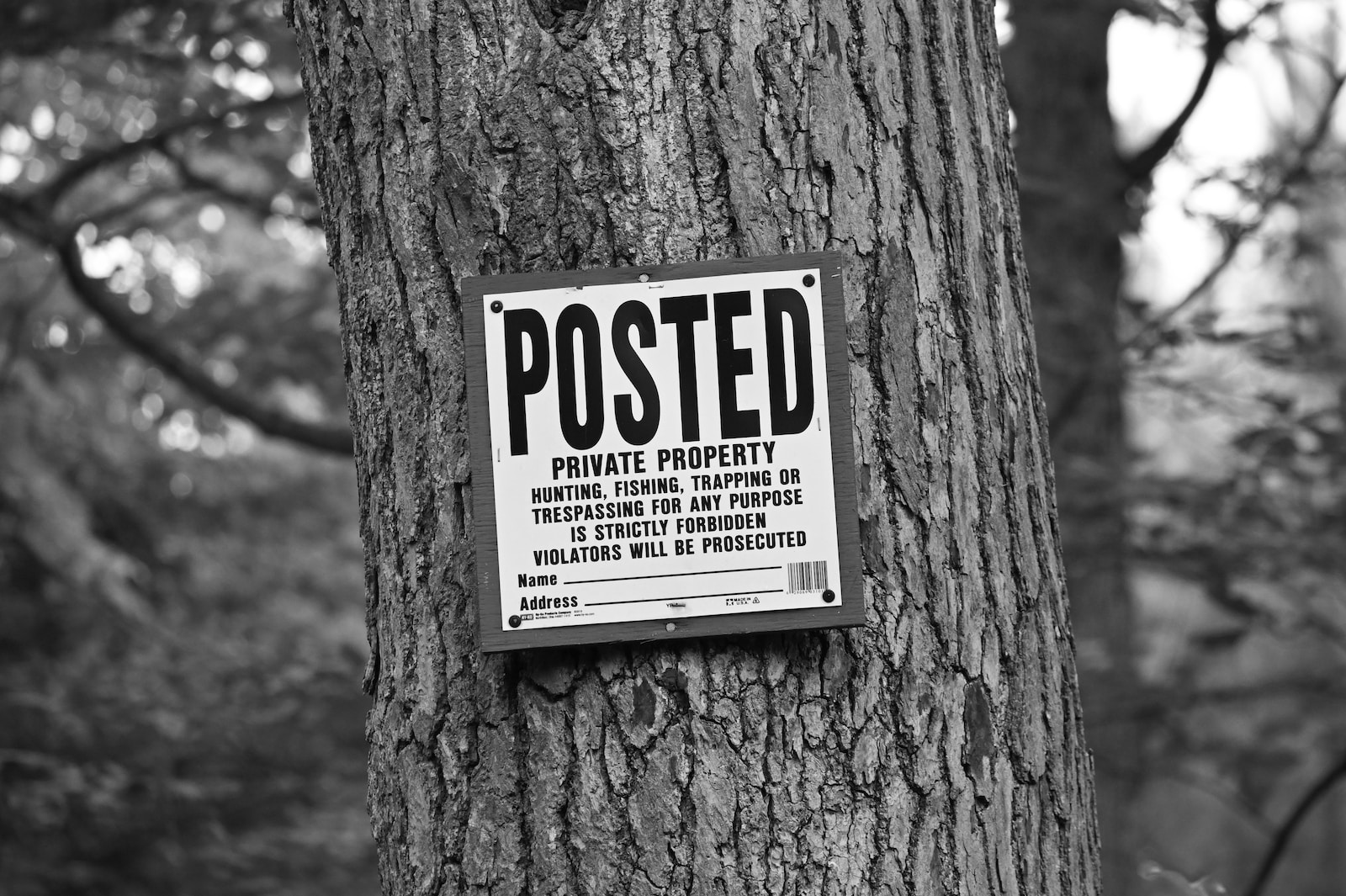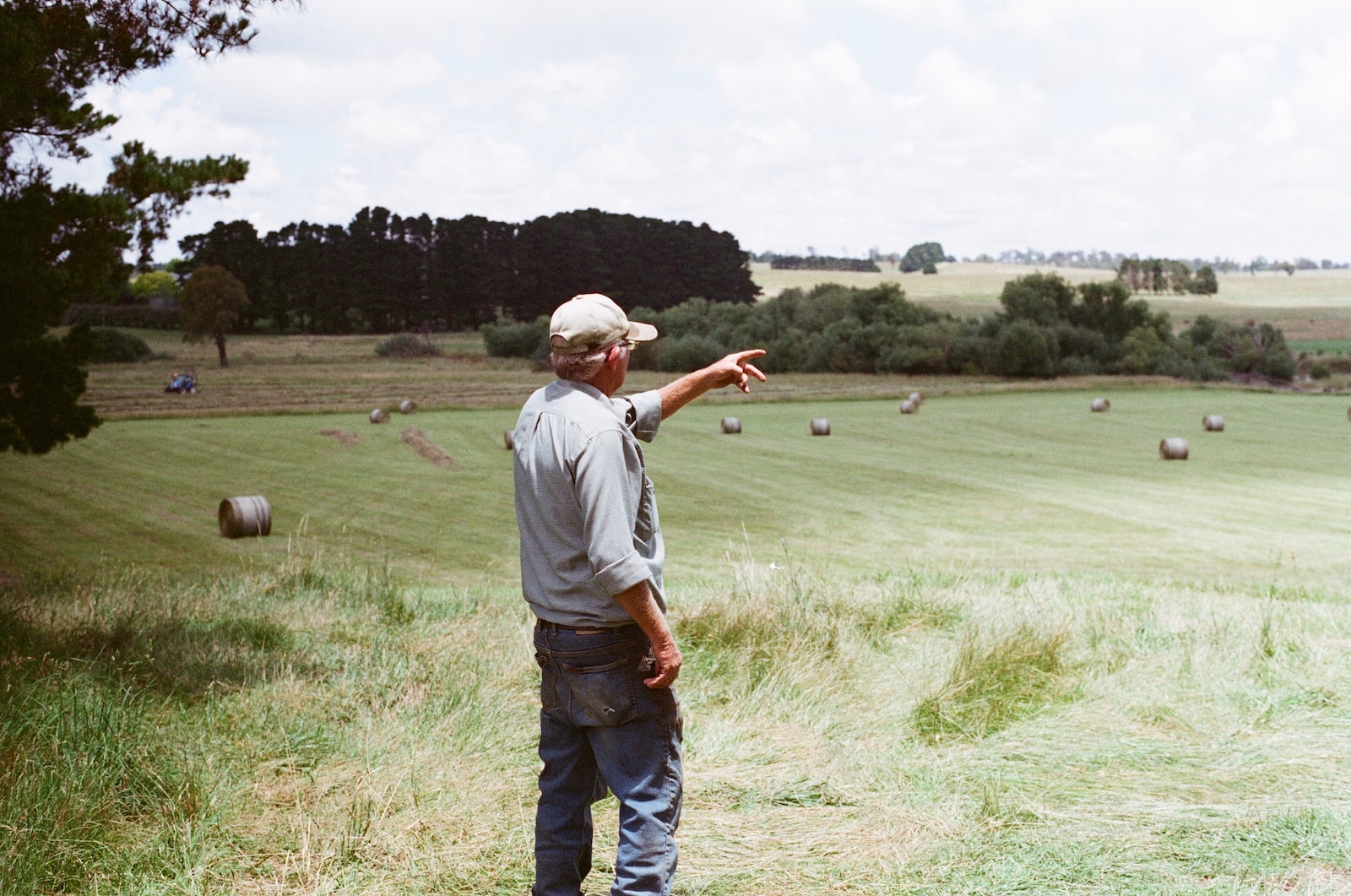How to File Adverse Possession in Texas
Contents
- How to File Adverse Possession in Texas
- Five Requirements for Adverse Possession
- 1. Actual and Exclusive Possession
- 2. Open and Notorious Possession
- 3. Continuous Possession for a Specified Period
- 4. Hostile or Adverse Possession
- 5. Claim of Right or Color of Title
- “Tacking” in Adverse Possession Cases
- Statutory Time Period for Adverse Possession in Texas
- Adverse possession against the Government or Public Lands
- Filing an Adverse Possession Claim in Texas
- Defending Against Claims of Permissive Use or Consent
- Notable cases related to adverse possession in Texas
- Conclusion
Adverse possession, a legal concept that may seem perplexing at first, holds significant implications in property law. It refers to the acquisition of property rights through continuous and notorious possession of another person’s land. Although it may appear controversial, adverse possession serves an important purpose in maintaining the stability of land ownership and resolving potential disputes.
The concept of adverse possession traces its roots back to ancient times when societies recognized the need for land to be utilized and cared for. Over time, it has evolved into a structured legal principle with specific requirements that must be met for a claim to be successful.

Understanding adverse possession is essential for property owners, prospective buyers, and even legal professionals. It is a concept that can impact land titles, boundaries, and property disputes. By exploring its requirements and processes, you can gain valuable insights into protecting your property rights or navigating potential legal matters.
In this comprehensive guide, we will dive into the essential requirements of adverse possession and provide a step-by-step approach to filing a claim in Texas. Whether you are seeking to understand the nuances of adverse possession or contemplating asserting a claim, this guide will equip you with the knowledge and tools needed to navigate this complex legal terrain.
Five Requirements for Adverse Possession
In Texas, to successfully claim adverse possession of a property, there are five essential requirements that must be met. These requirements serve as the foundation for your legal case and provide the framework for proving your claim. It is crucial to understand and fulfill each requirement to increase your chances of a successful adverse possession claim in Texas. In Estrada v. Cheshire, 01–14–00014–CV, the judge rules that you must prove all of the following:
- Actual and Exclusive Possession: You must physically possess the property in question. This means using and controlling the property as if you were the true owner. Your possession must also be exclusive, meaning you have sole control and no one else is asserting ownership rights.
- Open and Notorious Possession: Your possession of the property must be open and obvious to anyone who observes it. It should be evident that you are treating the property as your own without any attempt to hide your occupation.
- Continuous Possession: Your possession of the property must be continuous over a specific statutory period. In Texas, this period is generally ten years, although there are exceptions depending on the circumstances. Any gaps in your possession may interrupt the continuity and could weaken your claim.
- Adverse or Hostile Possession: Contrary to popular belief, “hostile” does not mean aggressive or confrontational. In this context, it means that you are occupying the property without the permission or consent of the true owner. Your possession must be against the rights of the owner, asserting your own entitlement to the property.
- Claim of Right: You must possess the property with a claim of right, meaning you genuinely believe you have legal ownership of the property. This belief should be based on a reasonable understanding of the facts and law.
In Estrada v. Cheshire(2015), they “failed to establish their claim by adverse possession.”
1. Actual and Exclusive Possession
To meet the requirement of actual possession, the claimant must physically occupy the property and treat it as their own. Mere occasional use or sporadic presence is not enough to establish actual possession. It is important to establish a continuous and uninterrupted presence on the property, demonstrating that the claimant is the one in control.
Furthermore, exclusive possession is another vital element that must be satisfied. The claimant must demonstrate that they have exclusive control over the property, excluding others from using or accessing it. This means that the claimant must be the only one utilizing the property and exercising control over it.

To strengthen a claim for adverse possession based on actual and exclusive possession, there are a few key actions that can be taken. Erecting a fence, maintaining the property, paying property taxes, and making improvements are all factors that showcase the claimant’s intent to possess and establish control over the property.
In Texas, the requirements for actual and exclusive possession are particularly strict. The claimant must possess the property openly, notoriously, continuously, and without the permission of the true owner. This means that the claimant cannot hide their occupation or possession of the property, and they must do so for a specific period of time as defined by Texas law.
2. Open and Notorious Possession
To meet this requirement, the individual claiming adverse possession must use the property as if they were the true owner. This can include activities such as living on the property, maintaining it, making improvements, or even paying property taxes. The key is that these actions are done without any attempt to hide their possession from others.
The idea behind open and notorious possession is that it puts the true owner on notice that someone else is claiming ownership of the property. It prevents the adverse possessor from secretly taking over the property and waiting for the statutory period to pass before asserting their claim.
In the state of Texas, open and notorious possession is crucial for a successful adverse possession claim. It means that the possessor cannot hide their occupation or use of the property from the true owner or the public. This requirement ensures that the true owner has an opportunity to become aware of the adverse possession claim and take appropriate legal action if necessary.
3. Continuous Possession for a Specified Period
In Texas, the law requires the adverse possessor to occupy the property openly and notoriously. This means that the possession must be visible and apparent to anyone who might reasonably be expected to observe it. It should be clear to others that the adverse possessor is treating the property as their own.
The adverse possessor cannot abandon the property during this period. Even a temporary absence may break the continuity of possession and jeopardize the claim.
To satisfy the continuous possession requirement, the adverse possessor must occupy the property for a specified period, which varies depending on the circumstances. In Texas, the general rule is that the adverse possessor must maintain uninterrupted possession of the property for a period of ten years. However, there are exceptions and variations to this rule depending on the type of property and the specific circumstances of the case.

During this specified period, the adverse possessor must demonstrate exclusive control over the property and use it as if they were the rightful owner. They must also prevent others, including the true owner, from accessing or using the property.
To establish continuous possession, it is crucial to maintain clear and convincing evidence of occupancy throughout the required period. Documentation such as utility bills, tax records, maintenance records, photographs, and witness statements can be valuable in proving continuous possession.
4. Hostile or Adverse Possession
Hostile possession does not necessarily mean that the person claiming adverse possession has hostile intentions toward the owner. It simply means that the possession is without the owner’s permission. It can be helpful to think of hostile possession as a legal term that refers to the lack of permission rather than any malicious intent.
To establish hostile possession, there must be a clear act of assertion of ownership over the property. This can be demonstrated through actions such as making improvements, paying property taxes, or using the property as if it were their own. Essentially, the person claiming adverse possession must demonstrate that they are treating the property as their own and exercising control over it.
It’s important to note that the length of time required for adverse possession varies by state, including in Texas. In Texas, the adverse possessor must occupy the property continuously for a period of 10 years, among other requirements, to establish adverse possession.
5. Claim of Right or Color of Title
A “claim of right” refers to the belief that the individual possesses the property with actual ownership, even if that belief may be mistaken or erroneous. It signifies a sincere and genuine belief in one’s ownership rights, which is crucial in demonstrating the intention to possess the property openly and continuously.
On the other hand, a “color of title” implies that the individual has some form of a written document or legal instrument that purports to establish their ownership rights. This document might not be entirely valid or accurate, but it provides a semblance of legal authority.

To successfully assert a claim of right or color of title, it is important to gather supporting documentation such as deeds, wills, or any other legal instruments that may bolster your case. These documents should demonstrate a plausible basis for your belief in ownership and create a reasonable appearance of title.
In Texas, the requirements for establishing a claim of right or color of title vary depending on the circumstances and the specific type of adverse possession claim. It is advisable to consult with a qualified real estate attorney who can guide you through the intricacies of Texas property law and ensure that your claim is solidly backed by legal principles.
“Tacking” in Adverse Possession Cases
Tacking refers to the ability to combine periods of adverse possession by successive occupants to satisfy the required time period for a claim.
In simpler terms, if multiple individuals have occupied a property continuously, their individual periods of possession can be combined to meet the statutory time requirement. This principle is particularly significant in cases where the property has changed hands over the years, as it allows the current occupant to claim the entirety of the combined time period as their own.
However, it’s important to note that for tacking to be valid, there must be privity of estate between the successive occupants. Privity of estate refers to a legal relationship between the parties involved, such as a landlord-tenant relationship, that allows the claimant to “tack” their period of possession onto that of their predecessor.
In Tex. Civ. Prac. & Rem. Code § 16.023, the courts have established certain requirements for tacking to be a viable strategy in an adverse possession case. Firstly, there must be a continuous chain of possession from one occupant to the next, without any gaps or interruptions. Additionally, the successive occupants must have had a good faith belief that they were the legal owners of the property, without any knowledge of a superior title.
To successfully utilize tacking in an adverse possession claim, it’s crucial to gather and present evidence that demonstrates the continuous chain of possession and the absence of any gaps or interruptions. This may include documentation such as deeds, lease agreements, or utility bills that establish the occupancy history of the property.
Statutory Time Period for Adverse Possession in Texas
Texas law Sec. 16.021 mandates that for adverse possession to occur, the possessor must maintain uninterrupted possession of the property for a period of ten years. This means that the individual claiming adverse possession must be physically occupying the property, without permission from the true owner, for the entirety of the statutory period. It is important to note that the possession must be actual and exclusive, demonstrating the possessor’s intent to assert ownership over the property openly and continuously.

Beyond the ten-year requirement, there are additional factors that can impact the statutory time period for adverse possession in Texas. For instance, if the possessor has cultivated a good faith belief that they have legal ownership of the property, the statutory time period may be reduced to just five years. Good faith belief refers to the honest and genuine belief that the possessor has the right to claim ownership, even if it later proves to be mistaken.
In cases where the true owner is a minor, mentally incapacitated, or serving in the military, the statutory time period for adverse possession may be tolled or temporarily suspended until the owner’s disability or military service ends. This ensures fairness and protects the rights of individuals who may be unable to defend their property interests due to exceptional circumstances.
Rules for Urban vs. Rural Properties
In Texas, the requirements for adverse possession can vary depending on whether the property is classified as urban or rural.
In urban areas, such as cities or developed suburban regions, the rules for adverse possession tend to be more stringent. Generally, the adverse possessor must openly occupy and use the property without the owner’s permission for a continuous period of at least 10 years. Additionally, the possessor must pay property taxes on the disputed land during this time. Meeting these requirements can be challenging, but it is not impossible.
On the other hand, rural properties have slightly different rules for adverse possession. In these areas, the required period of occupation and use is reduced to only five years. However, the adverse possessor must still demonstrate open and continuous possession, along with payment of property taxes.
Adverse possession against the Government or Public Lands
The government has certain protections in place to safeguard its property interests. However, it is not impossible to successfully claim adverse possession against government or public lands if you meet the necessary criteria. The same requirements apply:
- Possession must be “hostile” or “adverse.” This means that you must possess the land without the permission of the government or public authority that owns it. You cannot simply enter into an agreement or lease arrangement with the government and claim adverse possession.
- Possession must be “open and notorious.” This means that your occupation of the land must be visible and obvious to anyone who may have an interest in it. You cannot hide or conceal your possession in any way.
- The possession must be “exclusive.” This means that you must have exclusive control and use of the land, without sharing it with others. If the government or public authority has any significant presence or control over the land, adverse possession may not be possible.
- Possession must be “continuous” for a specific period of time. In Texas, the statutory period for adverse possession against the government or public lands is typically 25 years. This means that you must occupy and possess the land continuously for the entire duration of this period to make a valid claim.
Follow the proper procedures and file the necessary paperwork with the appropriate government or public authority. This may involve submitting a notice of adverse possession, providing evidence of your continuous possession, and complying with any other specific requirements outlined by the government.
Filing an Adverse Possession Claim in Texas
Preparing and filing the necessary legal documents is a crucial step in the process of adverse possession. To successfully claim adverse possession in Texas, you must ensure that you have all the required paperwork completed accurately and submitted within the designated timelines.
- Start by gathering all relevant documents:
- A completed Application for Adverse Possession form, which can be obtained from the county clerk’s office or downloaded from their website.
- A detailed description of the property in question, including its boundaries, size, and any improvements made.
- Evidence of your continuous and exclusive possession of the property, such as photographs, utility bills, tax records, or affidavits from witnesses.
- A copy of the deed or title document of the current property owner.
- Any other supporting documentation that strengthens your claim, such as surveys, maps, or historical records.
- Consult with an attorney: Adverse possession laws can be complex, and seeking legal advice is highly recommended. An experienced attorney can review your case, guide you through the documentation process, and ensure that you meet all the legal requirements.
- Complete the necessary forms: Carefully fill out the Application for Adverse Possession form, providing accurate and detailed information about your possession of the property. Be sure to include all required attachments and supporting documents.
- Review and double-check: Before submitting your documents, review them thoroughly to ensure that all information is accurate, consistent, and complete. Mistakes or missing information can delay or even jeopardize your claim.
- File the documents with the county clerk: Visit the county clerk’s office and submit the completed application form, along with all the supporting documents. Be prepared to pay any required filing fees, which vary by county.
Remember, the filing process may vary slightly from county to county, so it’s essential to familiarize yourself with the specific requirements of your jurisdiction. By diligently preparing and filing the necessary legal documents, you will be one step closer to potentially obtaining legal ownership of the property through adverse possession in Texas.
Defending Against Claims of Permissive Use or Consent
Defending against claims of permissive use or consent is a crucial aspect of navigating the complex world of adverse possession. As the party seeking to establish adverse possession, it is imperative to demonstrate that your possession of the property was not based on the owner’s permission or consent.
To successfully defend against such claims, you must gather and present compelling evidence that proves your use of the property was adverse, hostile, and without the owner’s permission. This can be achieved by showcasing a clear intention to dispossess the owner and claim exclusive rights to the property.

One effective strategy is to gather documentation that supports your claim of adverse possession. This may include photographs, property tax payments, utility bills, and any other official records that demonstrate your continuous and exclusive use of the property.
Gather witness testimonies from individuals who can attest to the fact that you were openly occupying and using the property without the owner’s consent. These witnesses can provide valuable evidence in establishing the adversarial nature of your possession.
In some cases, it may be necessary to challenge the owner’s allegations of permissive use or consent through legal means. Seeking the assistance of an experienced attorney who specializes in adverse possession cases can significantly strengthen your defense. They can help you navigate the complexities of the legal system and provide guidance on how to counter any claims made by the property owner.
Adverse possession has seen some notable cases that have shaped the interpretation and application of the law. One such case is Smith v. Bayer, a landmark decision where the court clarified the requirements for adverse possession and upheld a claim based on open and notorious use of the property for the statutory period.
Another significant case, Hernandez v. Aguilar, highlighted the importance of continuous occupation and cultivation of the land in an adverse possession claim. The court ruled in favor of the defendant, recognizing their longstanding use of the property for agricultural purposes as meeting the requirements for adverse possession.
Additionally, recent developments in Texas legislation have brought about changes that affect adverse possession claims. The Texas legislature passed House Bill 561, which modified the requirements for adverse possession, including stricter guidelines for the payment of property taxes during the statutory period.
Conclusion
Understanding the potential risks and rewards of adverse possession is crucial before embarking on this legal journey. While it can be a viable option for individuals seeking to gain ownership of abandoned or neglected properties, it is not without its challenges and potential pitfalls.
We hope you found our blog post on adverse possession in Texas informative and helpful. Unlocking the secrets to this legal concept can be complex, but with our guide, you now have a clear understanding of the five essential requirements and how to file for adverse possession in Texas. Whether you’re a landowner looking to protect your property or someone seeking to claim ownership through adverse possession, this post provides valuable insights and guidance. Remember to consult with a legal professional for specific advice related to your situation. Best of luck in navigating the fascinating world of adverse possession in Texas!




